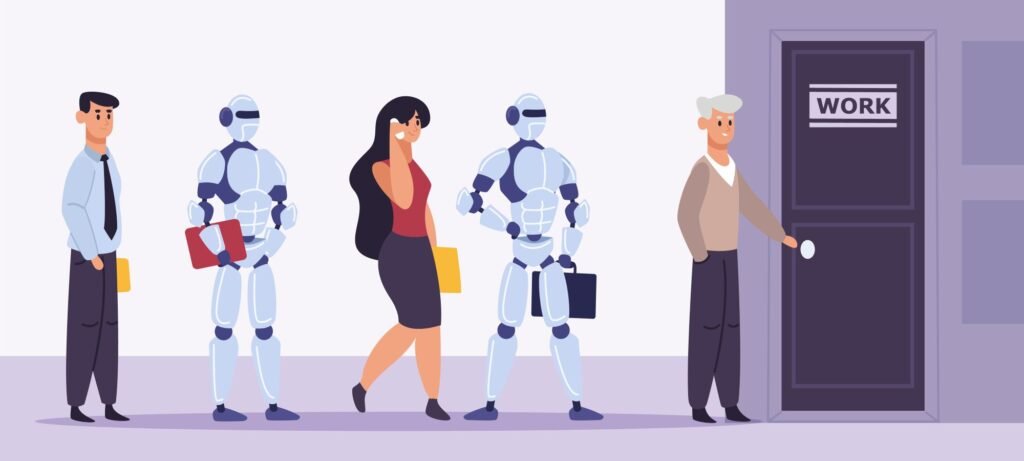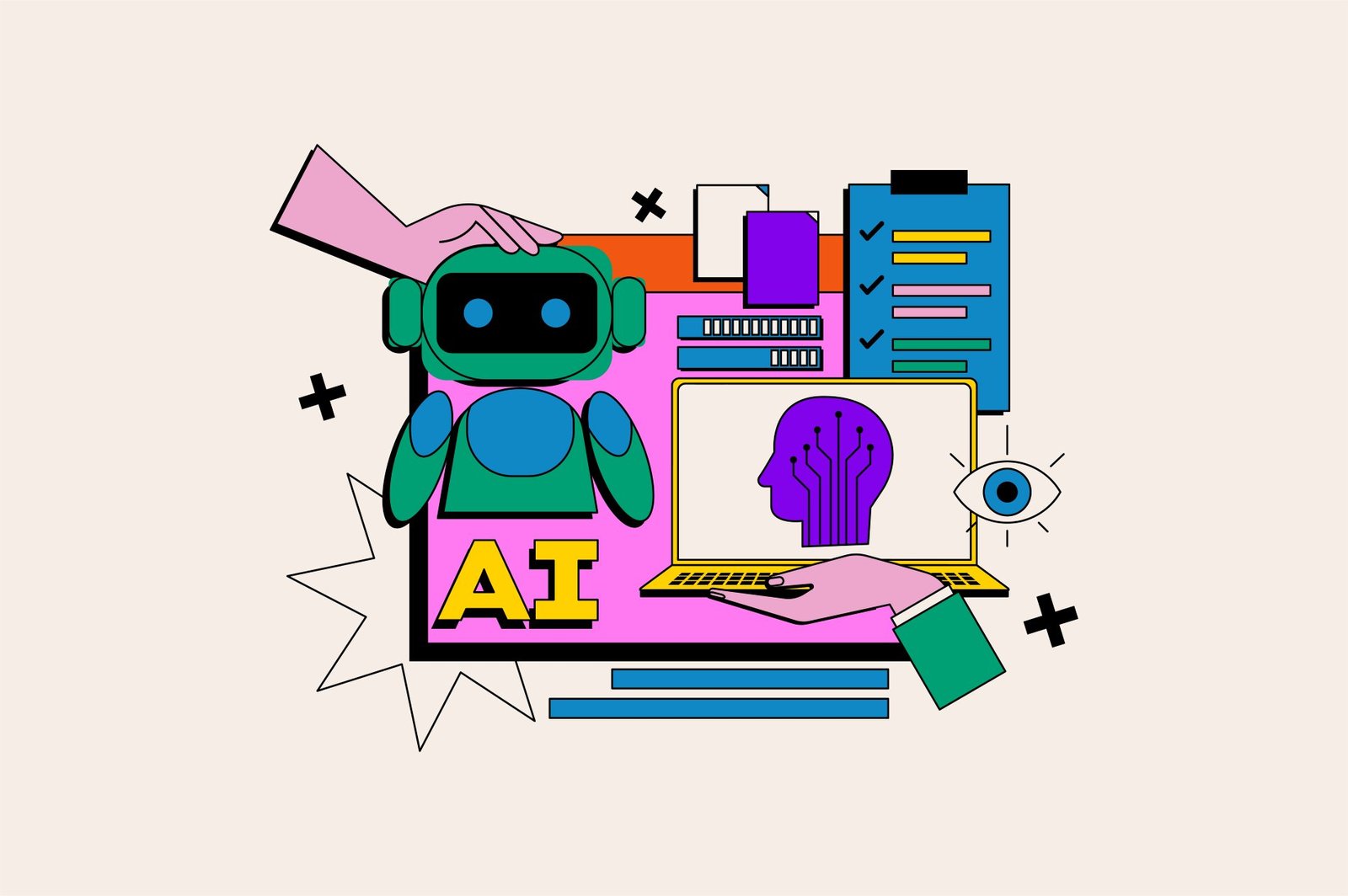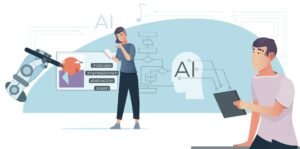In today’s digital world, we interact daily with AI-powered assistants, chatbots, and autonomous systems, collectively known as AI agents. These agentic systems are transforming industries, from optimizing supply chains to providing personalized customer service. However, their ability to act independently raises important questions about how to manage and govern them effectively. This article explores the concept of AI identities, the unique characteristics of agentic systems, and the strategies needed to govern them in a way that’s easy to understand, using real-world analogies and examples.
On This Page
Table of Contents
The Evolution of Identity Governance
To understand how we govern AI agents, it’s helpful to look at how identity governance has evolved over time.
- 1960s: The Mainframe Era
In the 1960s, computers were large mainframes used to store files and run scheduled tasks, or “jobs.” Organizations needed to know who was accessing these systems and what they were doing. This led to the first concepts of identity management, where users were identified to protect data and ensure proper access. - 1970s-80s: Rise of Networks and Databases
As databases and networked applications emerged, systems became more complex. Organizations had to provision users (create accounts), store their details in directories, authenticate their identities, and control their access to various systems. This era laid the foundation for modern identity governance. - Modern Era: External Users and SaaS
With the advent of external users accessing systems through firewalls and the rise of Software as a Service (SaaS) platforms, identity governance became even more critical. Organizations needed to manage a growing number of users and systems, ensuring that only authorized individuals could access sensitive data.
This evolution shows how identity governance has adapted to new technologies and user types, setting the stage for governing AI agents.
What Are AI Agents and Agentic Systems?
AI agents are autonomous software entities that can perform tasks, make decisions, and interact with their environment without constant human supervision. Unlike traditional software, which follows fixed rules, agentic systems are dynamic and adaptive, capable of handling complex tasks.
Key Characteristics of AI Agents
- Dynamic Entities: AI agents can change their behavior based on the context or task. For example, a customer service agent might escalate a query to another agent if it detects a complex issue.
- Complex Handoffs: They interact with multiple agents or systems to achieve goals, like a relay race where each runner passes the baton to the next.
- Adaptive Nature: AI agents learn from their environment and adjust their actions over time, becoming more efficient. For instance, an agent managing a warehouse might optimize delivery routes based on real-time data.
Example
Consider Amazon’s warehouse robots, which use agentic AI to navigate complex environments, move goods, and adapt to changing conditions. These robots don’t just follow a script; they make decisions on the fly, such as avoiding obstacles or prioritizing urgent orders.
Why Governance of AI Agents Is Crucial
The autonomy of AI agents makes them powerful but also introduces risks. Without proper governance, agents could access sensitive data inappropriately, make unintended decisions, or be compromised by malicious actors. Governance ensures that agents operate within defined boundaries, much like how a hospital restricts staff access to patient records to protect privacy.
Analogy: A Hospital’s Security System
Imagine a hospital where:
- Each doctor, nurse, and device has a unique ID (like a badge).
- Doctors can only access a patient’s records when treating that patient (context-aware access).
- Temporary staff get access only for their shift (ephemeral access).
- Different departments, like radiology or pharmacy, access only their relevant systems (segmentation).
- All actions are logged for auditing (observability).
Similarly, AI agents need structured rules to ensure they act safely and ethically in digital environments.
Governance Strategies for AI Agents
Governing AI agents requires tailored strategies that account for their unique characteristics. Below are five key strategies, each with practical steps and examples.
1. Unique Identity
AI agents must have distinct identities to differentiate them from human users or traditional software. This ensures transparency and compliance with regulations that require identifying agents.
- Provision Unique Identifiers: Assign each agent a unique ID, like “AGENT-001” for a supply chain optimizer.
- Regulatory Compliance: Some laws mandate that agents be identified as non-human entities, especially in customer interactions.
- Tailored Authentication: Use authentication methods designed for autonomous systems, such as API keys or digital certificates.
Example: A virtual assistant like Siri or Alexa identifies itself as an AI to users, ensuring transparency as required by regulations.
2. Context-Aware Access
Access control for AI agents should consider the context of their interactions, ensuring they only access data or systems relevant to their task.
- Evaluate Context: Assess the purpose and situation when an agent requests access. For instance, a financial AI agent should only access transaction data when processing a payment.
- Dynamic Access Control: Adjust permissions based on real-time needs, unlike static roles used for human users.
Example: In healthcare, an AI agent recommending treatment plans accesses patient data only for the specific patient it’s assisting, ensuring privacy .
3. Ephemeral Access
Access for AI agents should be temporary, granted only for the duration needed to complete a task. This minimizes the risk of unauthorized access.
- Just-in-Time Access: Provide access only when an agent needs it and revoke it immediately after. For example, an agent booking a flight gets temporary access to a booking system.
- Minimize Risk: Temporary access reduces the window for potential misuse or attacks.
Example: An AI agent processing insurance claims might access customer data only during the claim evaluation, with access revoked once the task is complete.
4. Segmentation and Isolation
Limit the scope of what an AI agent can access or interact with to reduce risks if an agent is compromised.
- Limit Scope: Restrict agents to specific functions or data sets. For example, a marketing AI agent can access campaign data but not financial records.
- Contain Breaches: If an agent is hacked, segmentation ensures the damage is confined to a small area.
Example: In cybersecurity, an AI agent monitoring network traffic is isolated to that task, preventing it from accessing unrelated systems .
5. Observability
Comprehensive monitoring and logging of AI agent activities ensure transparency and auditability.
- Comprehensive Monitoring: Track all agent actions and decisions, such as which systems they access or what decisions they make.
- Audit Trails: Maintain detailed logs for compliance and security reviews, ensuring organizations can trace any issues.
Example: A financial institution uses observability to log an AI agent’s risk analysis actions, ensuring compliance with regulations .
Comparison of Traditional and Agentic Identity Governance
The following table highlights the differences between traditional identity governance and agentic identity governance:
| Aspect | Traditional Identity Governance | Agentic Identity Governance |
|---|---|---|
| Identity Type | Human users, non-human systems (e.g., applications) | AI agents with unique identities |
| Access Control | Role-based, attribute-based, often static | Context-aware, dynamic, and ephemeral |
| Access Duration | Persistent access based on roles or permissions | Just-in-time access for specific tasks |
| Scope of Access | Broad access based on user roles | Segmented and isolated to specific functions |
| Monitoring | Standard logging and auditing | Enhanced observability for autonomous actions |
This table illustrates how agentic systems require more flexible and dynamic governance approaches compared to traditional systems.
Challenges in Governing AI Agents
The autonomous and adaptive nature of AI agents presents unique challenges:
- Dynamic Behavior: Agents’ ability to change their actions based on context makes it hard to predict their behavior, requiring flexible governance rules.
- Complex Interactions: Multiple agents interacting with each other or external systems increase the risk of errors or vulnerabilities.
- Regulatory Gaps: Existing frameworks, like the EU AI Act, may not fully address the risks of agentic AI, necessitating new standards .
Ongoing research and development of tools, such as those from IBM or AWS, aim to address these challenges by providing platforms for AI governance (AI Governance Tools).
Conclusion
As agentic systems become integral to industries like healthcare, finance, and logistics, robust governance frameworks are essential to ensure they operate securely and ethically. By implementing unique identities, context-aware and ephemeral access, segmentation, and observability, organizations can harness the power of AI agents while mitigating risks. Just as a hospital’s security system protects patients by controlling access, agentic identity governance safeguards enterprises and users in the digital age.

FAQs
How do AI agents differ from traditional software?
Unlike traditional software that follows fixed, deterministic rules, AI agents are dynamic and adaptive. They can adjust their behavior based on new data or changing conditions, making them more flexible but also more complex to manage.
What is agentic AI?
Agentic AI refers to AI systems with agency, meaning they can pursue goals independently in complex environments. These systems often use advanced algorithms to make decisions on the fly, such as optimizing delivery routes in real time.
Why is governance important for AI agents?
Governance ensures that AI agents act within defined boundaries, preventing unauthorized data access, unintended actions, or ethical violations. It’s like setting rules for a hospital to protect patient privacy, ensuring trust and compliance (AI Governance).
What are the key strategies for governing AI agents?
Key strategies include assigning unique identities, implementing context-aware access, using ephemeral access, applying segmentation and isolation, and ensuring observability. These measures help control what agents can do and monitor their actions.
How do unique identities for AI agents work?
Each AI agent is given a distinct identifier, like a digital badge, to track its actions and distinguish it from human users or other systems. This is crucial for transparency and meeting regulatory requirements that mandate identifying agents as non-human.
What is context-aware access in AI agent governance?
Context-aware access means granting AI agents access to data or systems only when relevant to their current task. For example, a healthcare AI agent might access a patient’s records only when treating that patient, ensuring privacy and security.
Why is ephemeral access important for AI agents?
Ephemeral access provides temporary permissions that expire after a task is completed, reducing the risk of misuse. It’s like giving a contractor a one-day keycard to a building, ensuring they can’t return later without authorization.
How does segmentation help in governing AI agents?
Segmentation limits an AI agent’s access to specific functions or data, minimizing damage if the agent is compromised. For instance, a marketing AI agent might access campaign data but not financial records, containing potential risks.
What role does observability play in AI agent governance?
Observability involves monitoring and logging all AI agent actions to ensure transparency and accountability. This creates audit trails, allowing organizations to review decisions and comply with regulations, similar to tracking transactions in a bank.
What are the main challenges in governing AI agents?
Challenges include managing their dynamic and adaptive behavior, securing complex interactions with multiple systems, and keeping up with evolving regulations. The autonomy of agents makes predicting their actions difficult, requiring flexible governance (Challenges of Governing AI Agents).
What are the security risks associated with AI agents, and how can they be mitigated?
Risks include data breaches, unauthorized actions, and adversarial attacks. Mitigation involves robust authentication, context-aware and ephemeral access, segmentation, and continuous monitoring to detect and respond to threats (AI Agents Safety).
What are the potential dangers or ethical issues with AI agents?
Ethical issues include bias in decision-making, privacy violations, and lack of transparency. For example, an AI agent might inadvertently discriminate if trained on biased data. Ethical governance requires diverse stakeholder input and regular audits to ensure fairness.
How might AI agent governance evolve in the future?
Future governance may involve advanced monitoring tools, international standards, and adaptive policies to handle increasingly autonomous agents. Research suggests a focus on real-time risk detection and global cooperation (AI Agents Governance).
How will AI agents evolve in the next 5-10 years?
AI agents may become more autonomous, capable of handling complex, multi-step tasks across industries. Advances in machine learning and natural language processing could make them more human-like, raising new governance challenges.
What impact will regulations have on AI agent deployment?
Regulations, like the EU AI Act, will likely require certifications, safety testing, and transparency, shaping how AI agents are developed and used. This could increase costs but enhance trust and safety.
What new governance challenges will arise with more advanced AI agents?
As agents gain greater autonomy, challenges may include ensuring accountability for decisions, preventing misuse in sensitive areas like cybersecurity, and addressing societal impacts like job displacement.








